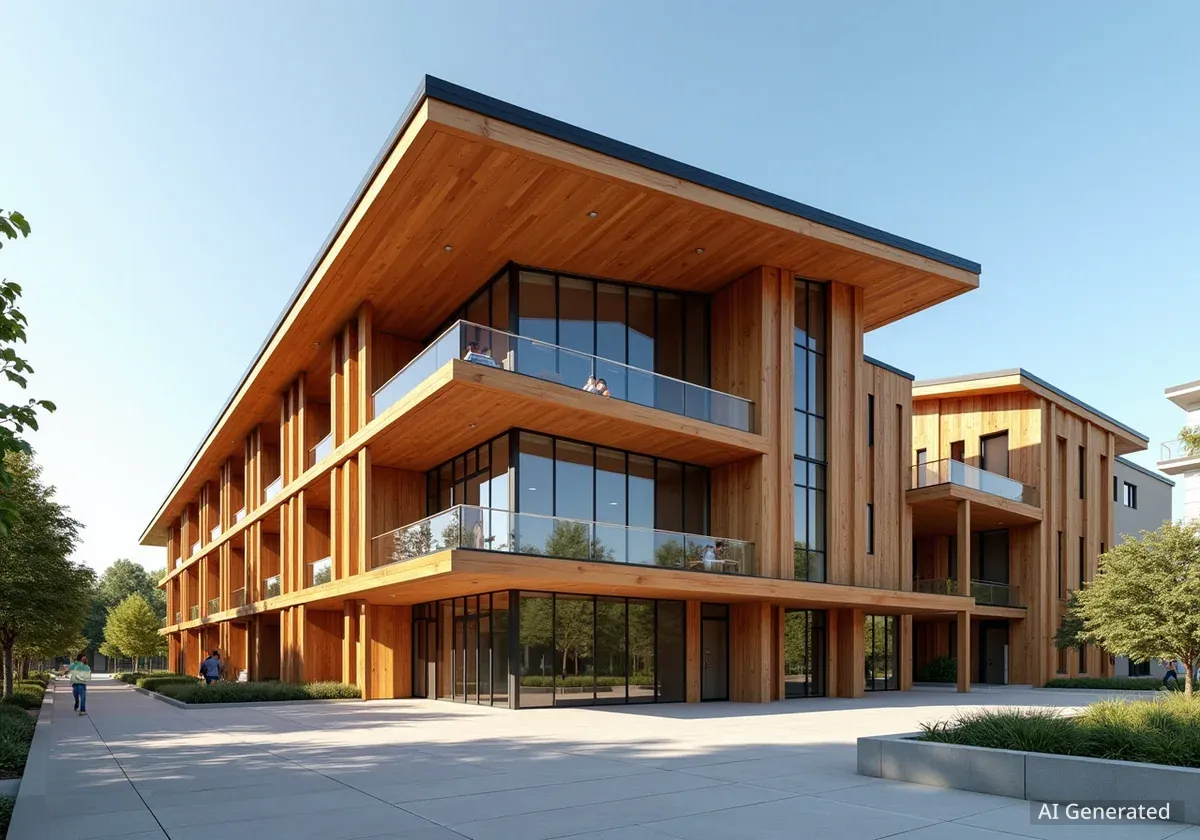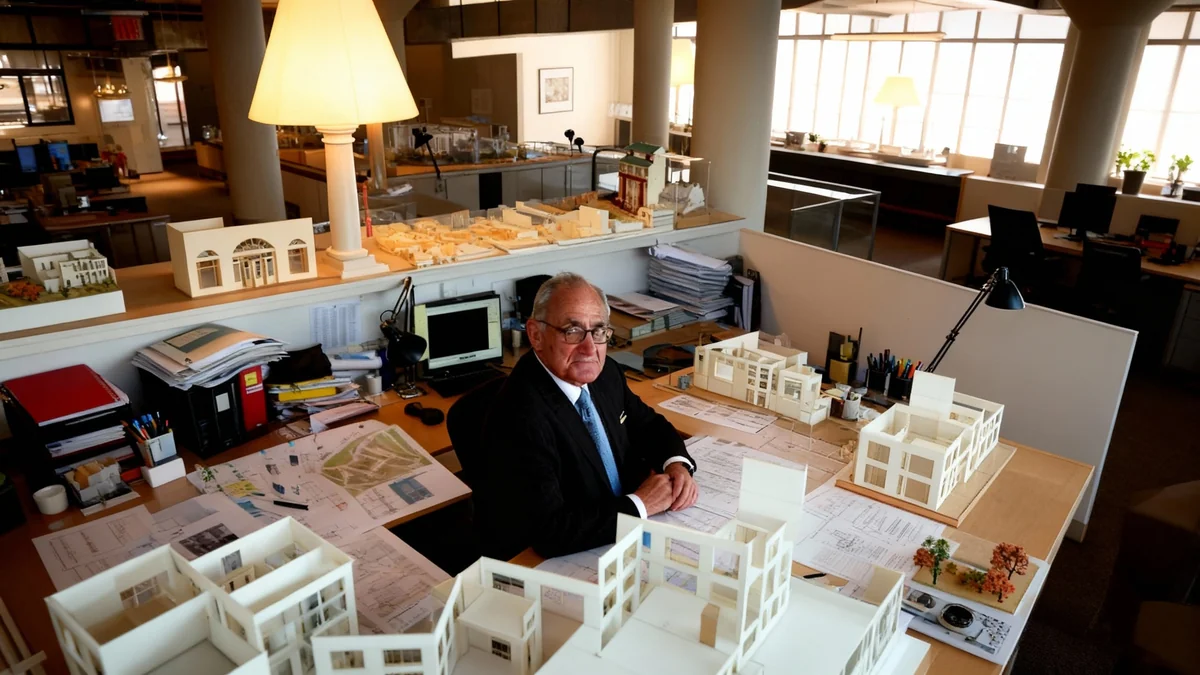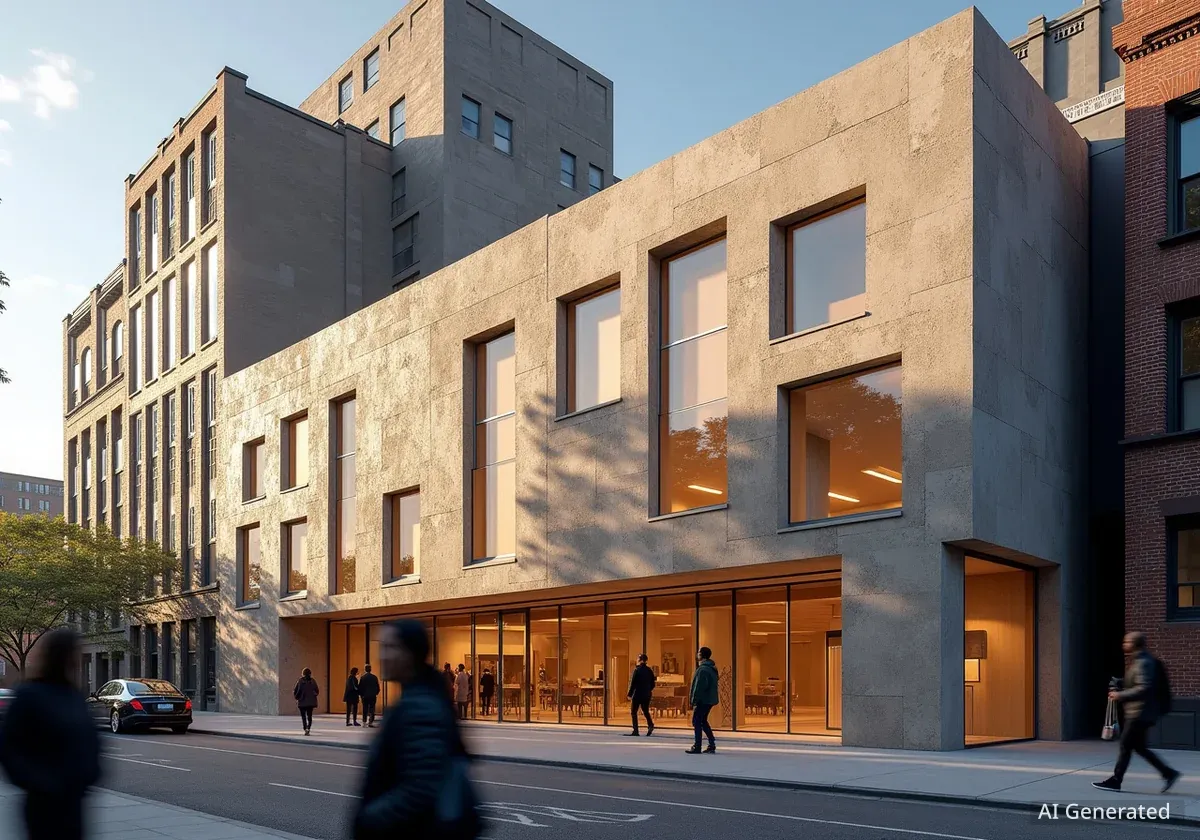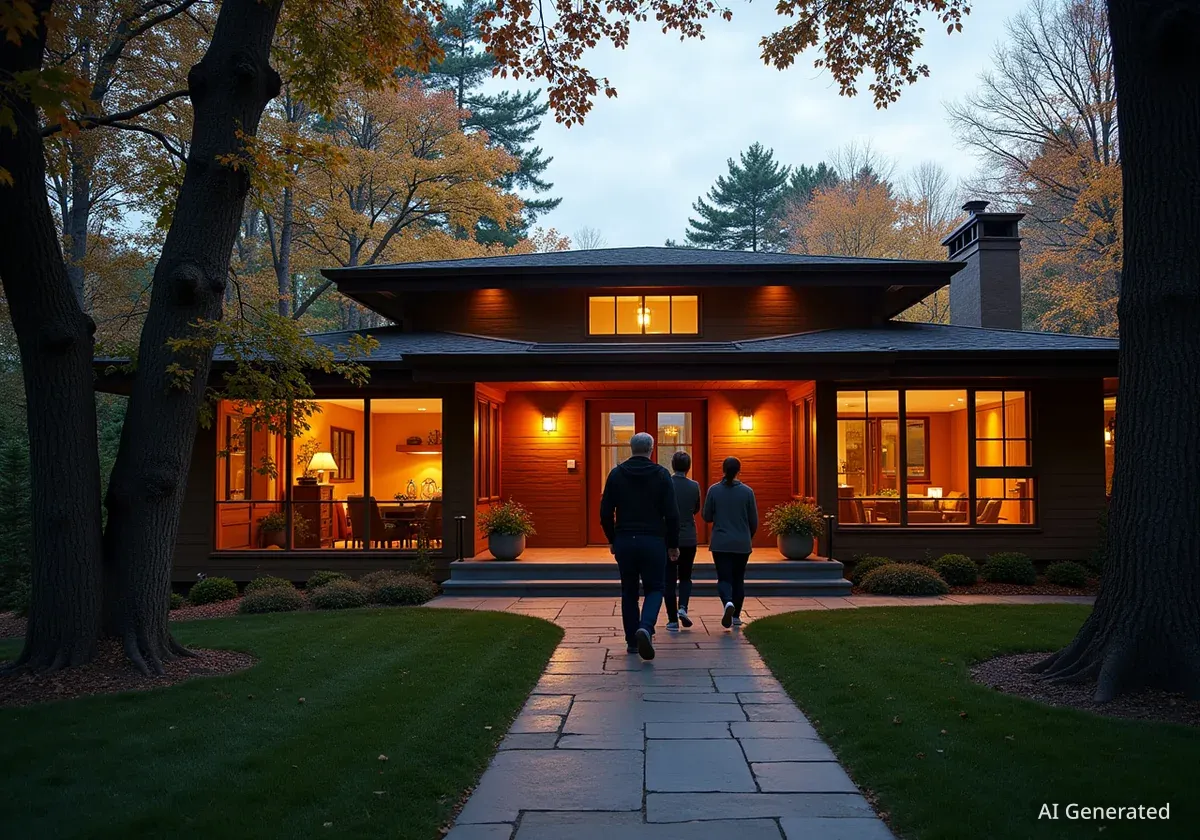The University of Arkansas's Fay Jones School of Architecture and Design has opened a new mass-timber building in Fayetteville. This structure, named the Anthony Timberlands Center for Design and Materials Innovation, is the first mass-timber project completed by Grafton Architects and their first in the United States. It also marks a significant step for the university in sustainable design and material innovation.
Designed in collaboration with US practice Modus Studio, the building features an angular roof and emphasizes the use of timber. This project represents a shift for Grafton Architects, who are known for their work with concrete and brick.
Key Takeaways
- Grafton Architects completed their first US project and first mass-timber building.
- The Anthony Timberlands Center integrates a central workshop with quiet learning spaces.
- The design highlights the educational value of timber and structural elements.
- Efforts to source local Arkansas timber faced challenges due to industry specialization.
Innovative Design for Architectural Education
The core of the Anthony Timberlands Center is an 11,000-square-foot workshop on the ground floor. This space features double-height ceilings, providing ample room for students to work with various materials. Above this workshop, a lecture hall serves a dual purpose as a gallery. Large windows in the lecture hall offer direct views into the workshop below.
This layout encourages a strong visual connection between students. It allows those in lecture settings to observe practical work in progress. Classrooms, studios, and conference rooms occupy the two floors directly above the lecture hall, creating a vertical integration of learning environments.
"Normally, a lecture theatre is away from a workshop for reasons of noise," said Grafton Architects cofounder Shelley McNamara. "We suspended the lecture theatre in the workshop, and the two floors of teaching spaces are above that – a workshop with noisy, dusty machines is overlooked by quiet rooms. They benefit from each other."
McNamara noted that this arrangement is uncommon in architecture schools. It places the workshop at the heart of the educational experience, making the building an exciting place for discovery and learning.
Building Statistics
- Workshop Size: 11,000 square feet (1,020 square meters)
- Total Floors: 4 (ground floor workshop, lecture hall, two teaching floors)
- Primary Material: Mass timber
Responding to Environment and Structure
The building's exterior design addresses environmental factors specific to Arkansas. Facades are carefully crafted to minimize direct sunlight exposure. The distinctive angular roof profile is engineered to manage the region's southwesterly winds and heavy rainfall. This practical design element also contributes to the building's unique aesthetic.
At its highest point, the building features glazed panels along a facade with a prominent upper section. Other parts of the exterior are covered with metal panels, thermally modified southern yellow pine, and red cedar wood. The roof uses cross-laminated timber (CLT) panels, primarily made from southern yellow pine sourced from Arkansas. These panels rise and fall at various angles. Large glued-laminated timber (glulam) gutter beams are integrated between these panels to direct rainwater effectively.
"These canoes – they're spanning beams but they're also gutters that give an architectural language, an expression of doing the job of carrying the water," said Yvonne Farrell, cofounder of Grafton Architects.
This integration of structural and functional elements is a key design principle. It allows the building itself to teach students about materials and engineering solutions.
What is Mass Timber?
Mass timber refers to a category of engineered wood products that are used as structural elements in buildings. These include cross-laminated timber (CLT), glued-laminated timber (glulam), and other laminated wood products. Mass timber construction is known for its sustainability, speed of construction, and aesthetic appeal. It offers a lower carbon footprint compared to traditional concrete and steel.
The Building as a Teacher
Grafton Architects intended the Anthony Timberlands Center to be an educational tool. They believe students should learn directly from its structure, materials, and spatial arrangements. According to Yvonne Farrell, the building acts "like a new professor."
Students will experience the texture, grain, and atmosphere of timber. This direct interaction helps them develop a deep understanding of materials. Furthermore, the design aims to educate students about spatial dimensions and structural principles. Farrell emphasized the importance of students understanding concepts like column spacing and room widths.
"In terms of it being an educator itself, the students will get to know the texture and grain and atmosphere of timber," Farrell explained. "Then, bit by bit, it's about getting to know dimension. We wanted students to know that every 40 feet there's a big column, that the width of the room down below is 50 feet, so as a young interior designer or architect, you learn a vocabulary of spatial dimension."
This hands-on, experiential learning is central to the building's purpose for the Fay Jones School of Architecture and Design. It provides a constant, tangible example of architectural principles in practice.
Local Sourcing and Industry Development
A significant goal for Grafton Architects and Modus Studio was to source most of the timber locally from Arkansas. However, this proved challenging. Farrell explained that Arkansas's timber industry primarily specializes in smaller wood elements, not the larger mass timber components required for this type of construction.
As a result, the majority of the engineered wood products had to be imported from Austria. This highlights a gap in the local timber supply chain. Despite this, the project aimed to demonstrate the potential of mass timber construction using available local materials where possible.
"On one hand, it was necessary to use local material, but also to show what timber can do," said Farrell. "It was a combination of Austrian technology and what's available within Arkansas. The industry in Arkansas uses smaller elements. This building is trying to encourage the larger-scale use of composite timber spanning larger spaces."
The project serves as an example for the regional industry, potentially encouraging greater investment and development in mass timber production capabilities within Arkansas. This could lead to more sustainable and locally sourced construction in the future.
Campus Integration and Recognition
The Anthony Timberlands Center also includes a courtyard designed by American landscape architecture studio Ground Control. This courtyard is planted with local Loblolly pine trees. It provides a shaded public space for students, integrating the building with the broader campus environment and offering a natural setting for relaxation and study.
Grafton Architects is an internationally recognized firm. They received the 2020 RIBA Royal Gold Medal and the 2020 Pritzker Architecture Prize. In 2021, they won the Stirling Prize. Their concrete university campus in Lima, Peru, also received the inaugural RIBA International Prize in 2016. These awards underscore the studio's reputation for impactful and innovative architectural work.
The completion of this mass-timber building in Arkansas adds another notable project to their portfolio. It showcases their ability to adapt their design philosophy to new materials and regional contexts, while continuing to push boundaries in architectural education and sustainable construction.




